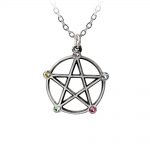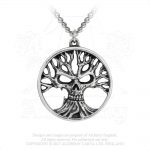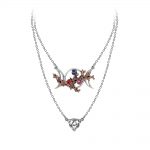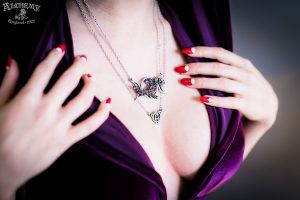The Pagan Festival Ostara
 Ostara is the one of the eight pagan festivals throughout the Wheel of the Year. Each season is celebrated and regarded as equally important. It is also a way to understand the natural world and its changes and become more in-tune with the environment. This is one of my favourite times of the year – if I could choose!
Ostara is the one of the eight pagan festivals throughout the Wheel of the Year. Each season is celebrated and regarded as equally important. It is also a way to understand the natural world and its changes and become more in-tune with the environment. This is one of my favourite times of the year – if I could choose!
The 21st March marks the Spring Equinox. The wondrous time of the year, parallel to Autumn Equinox. It is a time of balance – when the length of night and day are completely equal.
And it is the gateway into Spring! – the very first day of spring! The days will now get longer and the night shorter as we move into the summer season.
As well as the light and dark, other aspects come into balance – masculinity and femininity, inner and outer etc. But this festival marks the time of the year when light defeats the dark as we are coming out of the cold winter months. Where the world, which would have seemed like it was dying to our ancestors, begins to bloom again with life. It is a time of fertility, renewal and rebirth.

Ostara originally took its name from the Germanic goddess Eostre/Ostara, a representation of fertility and regrowth. And interestingly, the female fertility hormone has been influenced by the name of the goddess – “Eostrogen.” And this is where the Christian celebration of Easter evolved! – itself a celebration of rebirth.
And indeed, the things associated with modern day Easter are traditionally Ostara symbols – a Hare, Eggs and Hot cross buns!

The Goddess Ostara is most closely associated with a Hare – she is shown having the head and shoulders of a hare. The hare is particularly a symbol of fertility and abundance as in nature the hare is able to conceive even whilst pregnant! And over the centuries this hare symbol has become the Easter Bunny – who brings eggs to children on Easter morning, the Christian celebration.
Also, for many goddesses in Paganism, the Hare is a symbol of the moon. This also links to modern Easter celebrations as Christian Easter is determined by the phases of the moon.
The egg itself is very important! It represents potential and new life – symbolising fertility and all creation. It can optimise the masculine and feminine balance; light and dark in the yolk and egg white – the Sun God and White Goddess.
It is even seen by many traditions a symbol representing the entire universe.
It shows balance of all things for but a moment until the energy comes through bringing growth and rebirth to the world.

Finally, the hot cross bun too represents balance. The decoration of the cross on top can be seen as the Celtic Cross, the four armed cross within a circle. It represents the four seasons, the four directions of N, E, S, and W as well as the five sacred elements Earth, Air, Fire, Water and Spirit in the centre.
And the circumference is the cycle of the year – the circle of life. Pretty cool right?!
*
And if you did decide to add a little pagan celebration to your home there are some traditional items and colour associated with the festival:
Flowers: Daffodils, primroses, violets, crocuses, celendine, catkins, pussy willow in profusion
Colours (for use with candles or simple decorations): bright green, yellow and purple
Altar/table top ideas: coloured eggs, seeds, feathers, all spring flowers, colours above, all foliage that is sprouting into leaf.
Ostara Blessings!
Words by – Rose Hale
www.facebook.com/RoseHale333
Related Products :
Wiccan Elemental Pentacle (P786), Gotik Tree of Death (P793), Wiccan Goddess of Love (P785)




